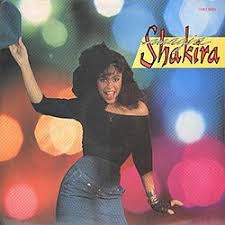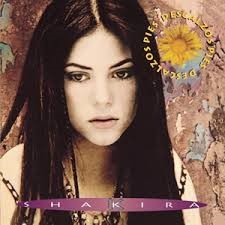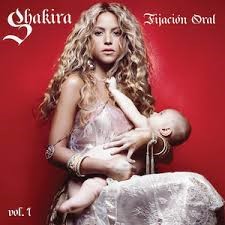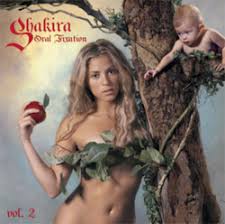Shakira music; An Album Review

Shakira music; An Album Review
Shakira is a Colombian singer-songwriter whose unique blend of Latin pop, rock, and world music has earned her global recognition. Over three decades, Shakira music has influenced millions, crossing language and cultural barriers. Known for her powerful voice, captivating performances, and songwriting talent, she remains one of the most successful Latin artists worldwide. This blog explores Shakira’s studio albums, highlighting her musical evolution and impact on the global music scene.
Most Asked Questions
Who is Shakira?
Shakira is a Colombian singer, songwriter, and performer known globally for her distinctive voice, belly dancing, and genre-blending music. She began her career in Latin America but expanded into the global mainstream with her bilingual albums. Shakira music includes elements of Latin pop, rock, reggaeton, and world music, making her one of the most versatile global artists. Her unique sound and cultural impact have earned her widespread critical and commercial success.
How many albums does Shakira have?
Shakira has released 12 studio albums, starting with Magia in 1991 and most recently Las Mujeres Ya No Lloran in 2024. Each album highlights different phases of her career and showcases her ability to adapt and evolve. Shakira music spans both Spanish and English releases, connecting with fans across the world.
What are Shakira’s most famous songs?
Several songs have defined Shakira music globally. “Hips Don’t Lie” became a worldwide anthem, while “Whenever, Wherever” launched her English-language career. “Waka Waka (This Time for Africa)” became a World Cup classic. Other standout hits include “La Tortura,” “Ciega, Sordomuda,” “She Wolf,” and “Chantaje.”
What is Shakira’s net worth?
As of 2025, Shakira’s estimated net worth exceeds $300 million, thanks to her album sales, world tours, brand partnerships, and television appearances. Shakira music remains a major source of revenue, along with her business ventures and endorsements.
Is Shakira still making music?
Yes. In 2024, she released Las Mujeres Ya No Lloran, her first full-length album in seven years. This release confirms that Shakira music continues to evolve with personal themes and high-profile collaborations.
What is Shakira’s real name?
Her full name is Shakira Isabel Mebarak Ripoll. Born in Barranquilla, Colombia, she began performing at an early age and wrote her first songs in childhood. Shakira music reflects her multicultural background, blending Latin, Arabic, and Western styles.
Does Shakira write her own songs?
Yes. Shakira writes or co-writes most of her songs. She is deeply involved in the creative process, from lyrics to production. Her ability to express emotion through her lyrics has played a major role in the appeal of Shakira music worldwide.
What awards has Shakira won?
Shakira has won multiple Grammy Awards, Latin Grammy Awards, MTV VMAs, and Billboard Music Awards. Her achievements include over 400 award nominations and more than 100 wins. Shakira music has earned her praise not only for performance but also for songwriting and innovation.
What is the Barefoot Foundation?
Shakira founded the Barefoot Foundation (Pies Descalzos Foundation) to support education for underprivileged children in Colombia. The organization has built schools and helped thousands of students. Her philanthropic work aligns with the compassion often reflected in Shakira music.
Did Shakira perform at the Super Bowl?
Yes. Shakira performed alongside Jennifer Lopez during the Super Bowl LIV Halftime Show in 2020. The performance received critical acclaim and drew millions of viewers. It celebrated Latin culture and reaffirmed the worldwide appeal of Shakira music.
What genre of music is Shakira known for?
Shakira music spans multiple genres. She is best known for Latin pop, pop rock, and world music, blending styles from reggaeton to Arabic influences. Her sound continually evolves, making each album distinct in both tone and direction.
The Albums
Magia (1991)

Shakira music began with Magia, her debut studio album released in Colombia when she was only 14. Although the album did not gain commercial success, it marked the first official release in what would become one of the most dynamic careers in Latin pop. Magia contains songs Shakira wrote between the ages of eight and thirteen. Because of that, the lyrical content feels youthful and unpolished, which is understandable given her age.
Still, Magia showcases the early emergence of her signature vocal style and melodic instinct. While production quality remained basic, the album hinted at her songwriting ambition. Shakira music had not yet reached a global audience, but Magia laid the groundwork for her artistic journey.
Over time, Shakira distanced herself from this album, rarely acknowledging it in her later work. Even so, Magia remains important as the public's first exposure to Shakira music. It’s a raw start, but every legacy begins somewhere.
Peligro (1993)

Shakira music continued to evolve with Peligro, her second studio album released exclusively in Colombia. While Magia showed her youthful side, Peligro aimed for maturity. The album presented a more developed pop-rock sound and bolder lyrical themes. However, like its predecessor, it struggled commercially and received little promotional support.
Despite improvements in vocal delivery and musical direction, Peligro did not break through. Shakira herself has expressed dissatisfaction with the final product. As a result, she eventually disowned the album and excluded it from most official discographies. Even so, Peligro reflects an artist refining her craft and exploring her identity.
Although Peligro lacks the polished confidence of her later records, it reveals determination. Because of that, fans who study Shakira music often view it as a transitional piece. While this album didn’t reach international listeners, it pushed her forward creatively. Peligro remains a lesser-known, yet formative chapter in Shakira music history.
Pies Descalzos (1995)

Shakira music reached a turning point with Pies Descalzos, the album that introduced her to a wider Latin American audience. Unlike her earlier efforts, this release featured stronger production, clearer vision, and full creative control. Shakira co-wrote every track, blending Latin pop with rock and folk influences. Because of that, the album connected with millions of listeners seeking something fresh.
Commercially, Pies Descalzos became a massive success. It sold over five million copies worldwide and marked her first chart appearances in countries like Mexico and Argentina. Songs such as “Estoy Aquí” and “Dónde Estás Corazón?” received heavy radio play. Moreover, critics praised her unique voice and introspective lyrics.
Shakira music shifted from local to regional success with this record. The album established her as a rising star with global potential. Though recorded entirely in Spanish, Pies Descalzos laid the foundation for the crossover career that would follow. It remains a landmark in Shakira music.
Dónde Están los Ladrones? (1998)

Shakira music gained critical and commercial acclaim with Dónde Están los Ladrones?, a defining album in her early career. Produced with Emilio Estefan, this release sharpened her pop-rock style and elevated her songwriting. She embraced bolder themes, addressing corruption, heartbreak, and identity with confidence and emotional depth.
The album’s title, inspired by a stolen suitcase of lyrics, symbolized creative resilience. Tracks like “Ciega, Sordomuda” and “Ojos Así” reached international charts and showcased her vocal power. Because of its sound and message, the album resonated across Latin America, the U.S. Latin market, and Spain. Critics praised its consistency, calling it one of the best Latin pop albums of the 1990s.
Shakira music entered a new phase with this record. Sales exceeded seven million copies worldwide, earning multi-platinum certifications. While still Spanish-language, it paved the way for her global crossover. Dónde Están los Ladrones? remains a cornerstone of Shakira music and her lasting legacy.
Laundry Service (2001)

Shakira music reached global heights with Laundry Service, her first English-language studio album. This release marked her crossover into the international pop market, combining Latin pop, rock, and dance-pop. While she kept her signature style, Shakira adapted her sound for a wider audience with impressive results.
“Whenever, Wherever” became a worldwide hit, reaching the top ten in multiple countries. Additionally, tracks like “Underneath Your Clothes” helped cement her global stardom. Her bilingual lyrics, dynamic voice, and unique rhythms offered something new in a crowded pop scene. As a result, the album sold over 13 million copies worldwide.
Critics responded positively, highlighting her songwriting and genre-blending approach. Because of this success, Laundry Service became a turning point in Shakira music. She proved her ability to transition into English-speaking markets without losing artistic identity. This album didn’t just expand her fan base — it redefined Shakira music for a global stage.
Fijación Oral, Vol. 1 (2005)

Shakira music returned to its Spanish roots with Fijación Oral, Vol. 1, the first half of a bilingual project. While her previous album targeted global audiences in English, this one refocused on Latin markets. Its style blended pop-rock with reggaeton, bossa nova, and folk influences, creating a rich, diverse sound.
The lead single “La Tortura,” featuring Alejandro Sanz, dominated Latin charts and became one of Shakira’s most recognized Spanish-language hits. In fact, the song’s success broke records on Billboard’s Hot Latin Songs chart. Additionally, the album won a Grammy for Best Latin Rock/Alternative Album, strengthening her credibility as a songwriter.
Commercially, the album sold over four million copies worldwide. Despite its Spanish lyrics, it gained traction in non-Spanish-speaking countries as well. Because of its emotional depth and genre fusion, this release remains one of the most celebrated in Shakira music. It showcased her versatility and solidified her global reach.
Oral Fixation, Vol. 2 (2005)

Shakira music entered a new phase with Oral Fixation, Vol. 2, the English-language follow-up to Fijación Oral, Vol. 1. While the first volume reconnected with her Latin audience, this album targeted mainstream pop listeners. She fused pop-rock with Latin rhythms and layered each track with bold, introspective lyrics.
“Hips Don’t Lie,” featuring Wyclef Jean, became the album’s biggest success. It topped charts in over 55 countries and remains one of the best-selling singles ever. Because of its global impact, the song pushed Shakira music further into international consciousness. Other singles like “Don’t Bother” added depth to her evolving pop persona.
Although initial sales were moderate, the album’s commercial performance surged after “Hips Don’t Lie.” Eventually, it sold over eight million copies worldwide. Critics praised her artistic risk-taking and genre-blending style. As a result, Oral Fixation, Vol. 2 helped define Shakira music in the 2000s and secured her place in global pop culture.
She Wolf (2009)

With She Wolf, Shakira music took a bold turn into electro-pop and dance territory. Moving away from her usual rock and Latin fusion, she embraced synthesizers, minimalist beats, and electronic production. This shift surprised longtime fans but showcased her ability to reinvent her sound without losing her identity.
The title track “She Wolf” became a global hit, charting in over 30 countries. Its infectious hook and quirky video highlighted her experimental direction. Additionally, singles like “Did It Again” and “Gypsy” added variety to the album’s tone. Despite a more niche sound, Shakira music remained commercially viable and critically respected.
Although She Wolf did not match the massive sales of her previous work, it still sold over two million copies. The album received praise for its creativity and sonic risk-taking. As a result, it confirmed that Shakira music could evolve with global pop trends while retaining her unique artistic voice.
Sale el Sol (2010)

Shakira music returned to its Latin pop and rock roots with Sale el Sol. This album blended energetic merengue rhythms, heartfelt ballads, and vibrant pop-rock tracks. It reflected her connection to Latin American culture while maintaining broad appeal.
The World Cup anthem “Waka Waka (This Time for Africa)” became an international sensation, uniting fans worldwide. Other singles like “Loca” and “Rabiosa” further highlighted her danceable Latin sound. Because of these hits, Sale el Sol gained widespread commercial success, selling over four million copies globally.
Critics praised the album’s balance between upbeat tracks and emotional depth. Additionally, Shakira music showed maturity and versatility in both songwriting and production. This album helped re-establish her presence in the Latin music scene after experimenting with new sounds. Overall, Sale el Sol reaffirmed Shakira’s status as a leading figure in Latin pop and global music.
Shakira. (2014)

Shakira music evolved with the album Shakira., blending pop-rock with urban and reggae influences. This release featured collaborations with artists like Rihanna and Magic!, broadening her musical reach. The album combined catchy hooks and diverse rhythms, reflecting contemporary trends.
Singles such as “Can’t Remember to Forget You” showcased her ability to create mainstream hits with cross-genre appeal. Additionally, “Empire” highlighted her vocal strength and emotional depth. Although the album’s sales didn’t match her earlier peak, it maintained solid commercial performance worldwide.
Critics appreciated the experimental nature and polished production, while noting the personal themes in her lyrics. As a result, Shakira. proved that Shakira music could remain relevant and innovative more than two decades into her career. This album balanced artistic growth with mass appeal, reinforcing her global music influence.
El Dorado (2017)

Shakira music reached new heights with El Dorado, a Grammy-winning album that blended Latin pop, reggaeton, and urban sounds. This release highlighted her return to Spanish-language music, featuring collaborations with Maluma and Prince Royce, which strengthened her appeal in Latin America and beyond.
Singles like “Chantaje” and “Me Enamoré” dominated charts, showcasing catchy melodies and heartfelt lyrics. Moreover, “Déjà Vu,” featuring Prince Royce, added romantic bachata flair. Critics praised the album for its polished production and Shakira’s continued evolution.
Commercially, El Dorado sold millions worldwide and earned Shakira her third Grammy for Best Latin Pop Album. Because of its success, this album reinforced Shakira music’s global influence and confirmed her ability to stay relevant in a competitive industry.
Las Mujeres Ya No Lloran (2024)

Shakira music continues to evolve with Las Mujeres Ya No Lloran, her most recent studio album. This release blends Latin pop with urban and reggaeton influences, featuring collaborations with Karol G and Bizarrap. The album explores personal and social themes, marking a mature phase in her career.
Tracks like “Bzrp Music Sessions, Vol. 53” and “TQG” gained widespread attention and streaming success. Additionally, Shakira’s songwriting shines through, with introspective lyrics and strong vocal performances. Critics have highlighted the album’s fresh sound and emotional depth.
Commercially, Las Mujeres Ya No Lloran has made a significant impact, reaffirming Shakira music’s relevance in today’s Latin and global music scenes. This album solidifies her status as a dynamic artist who continues to connect with fans worldwide.
Shakira music has consistently demonstrated versatility, innovation, and deep connection to her roots. From her early Spanish albums to her global English-language hits and recent Latin collaborations, each album marks a distinct chapter in her career. Her ability to blend genres and evolve artistically has kept her relevant across decades. As this review shows, Shakira continues to shape Latin and pop music, maintaining her status as an iconic artist on the world stage.
Recent Posts
Queen studio albums: A Review
Phil Collins Albums Ranked & Reviewed – Complete Guide to Every Studio Album
The best of Massive Attack
Let’s Make Magic
Book Your Event DJ Now




